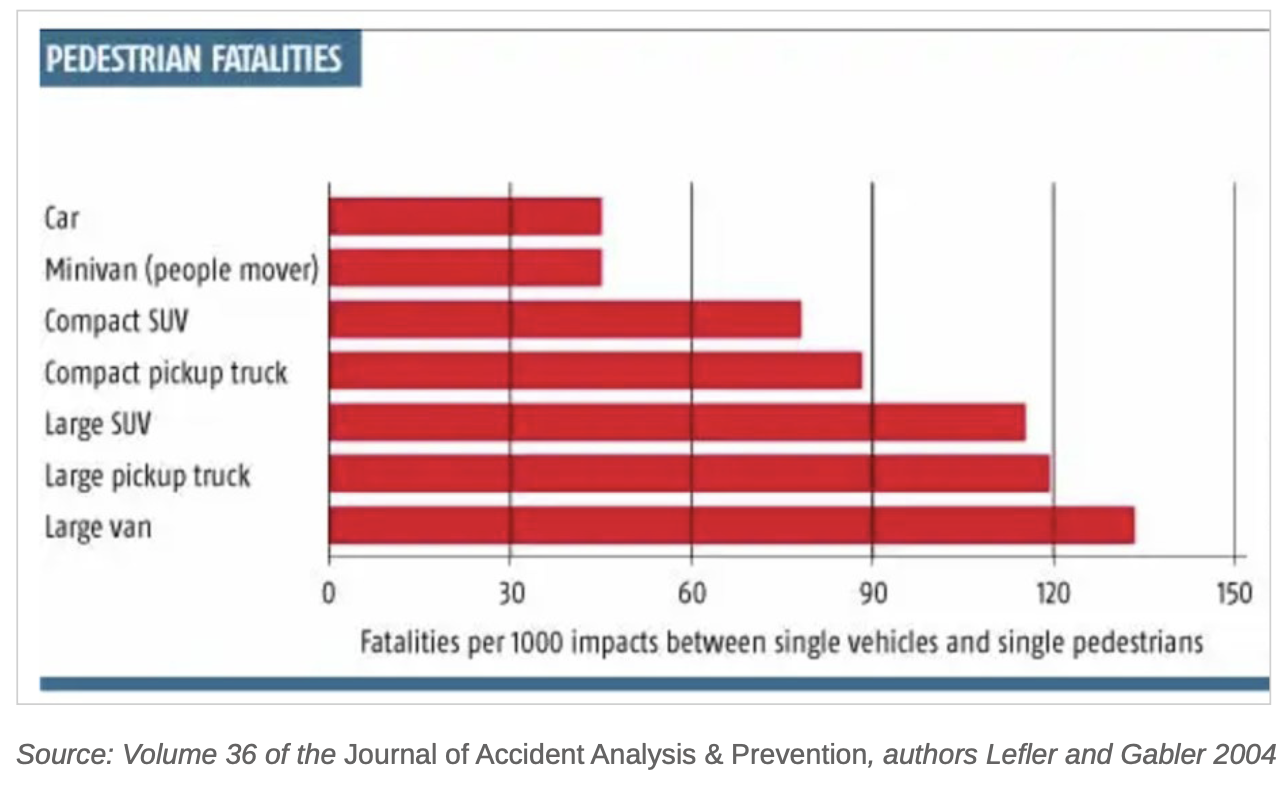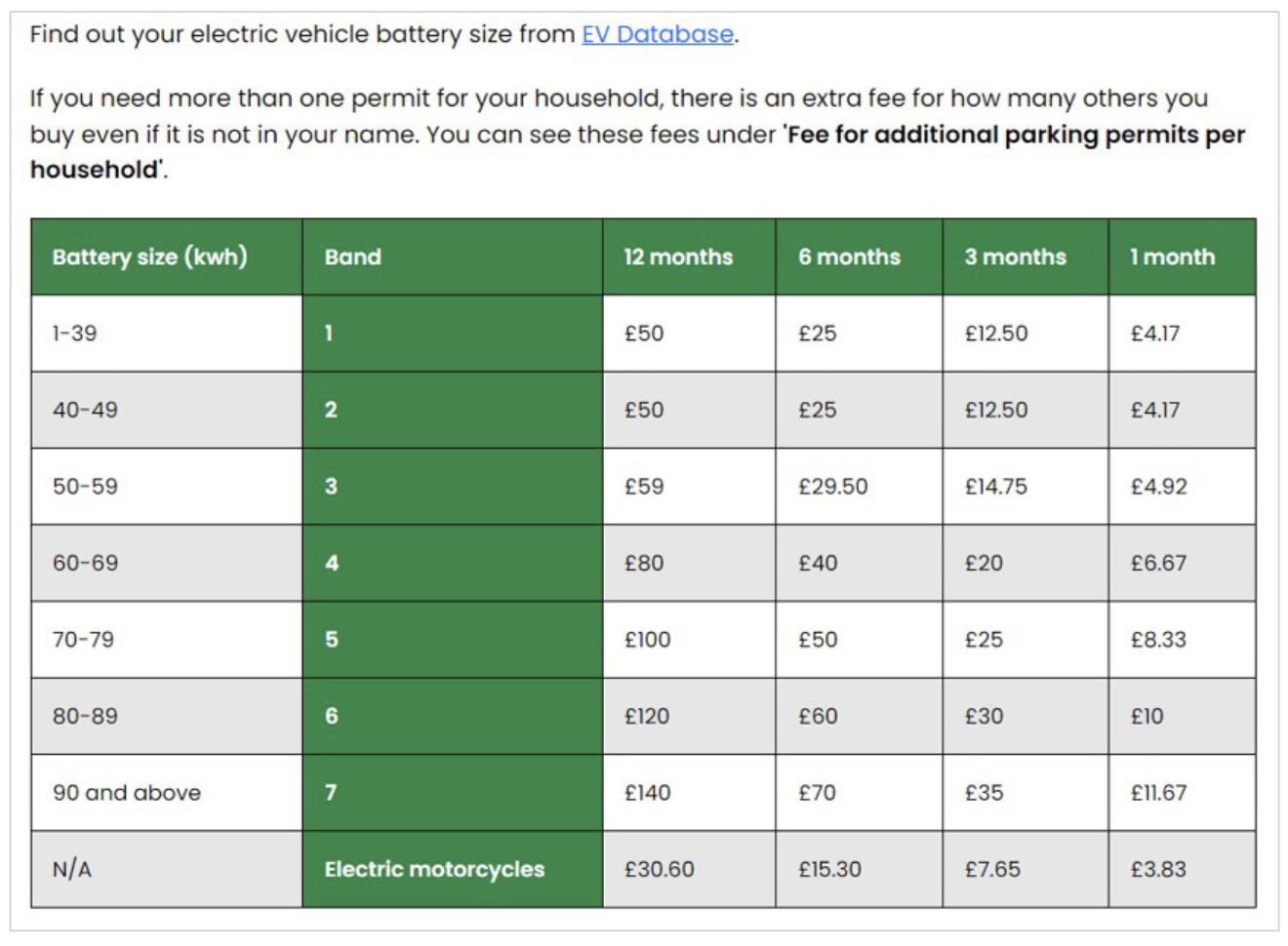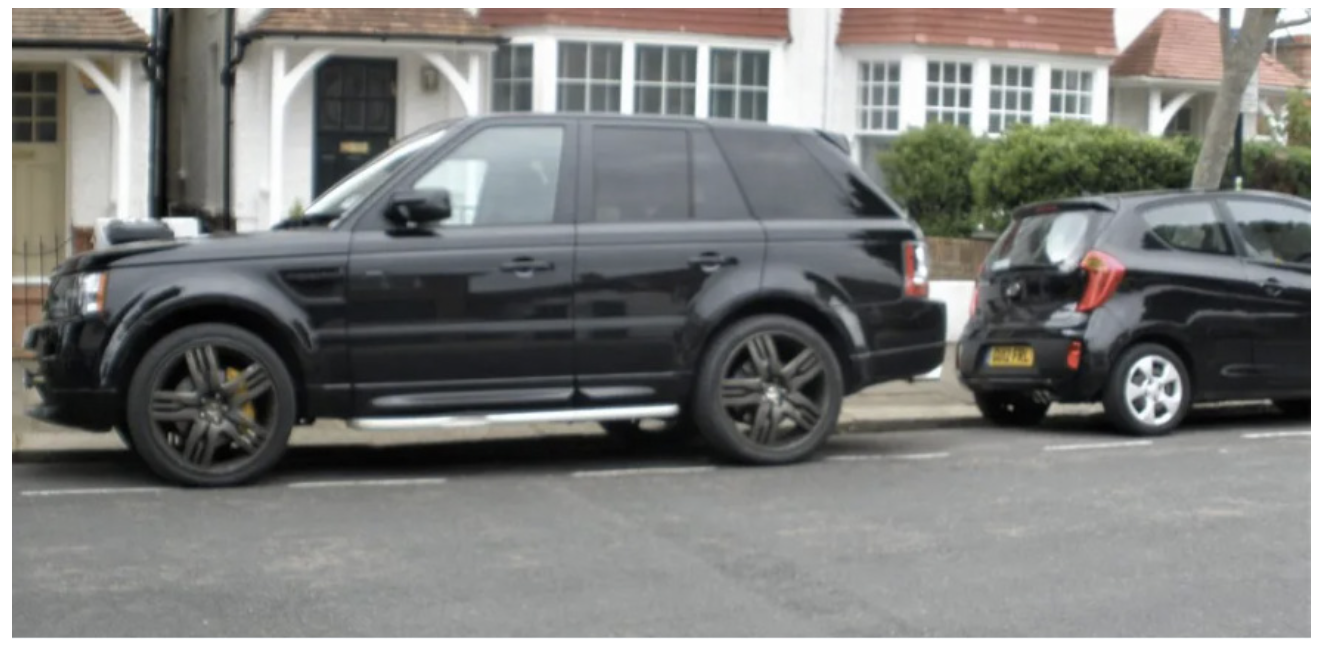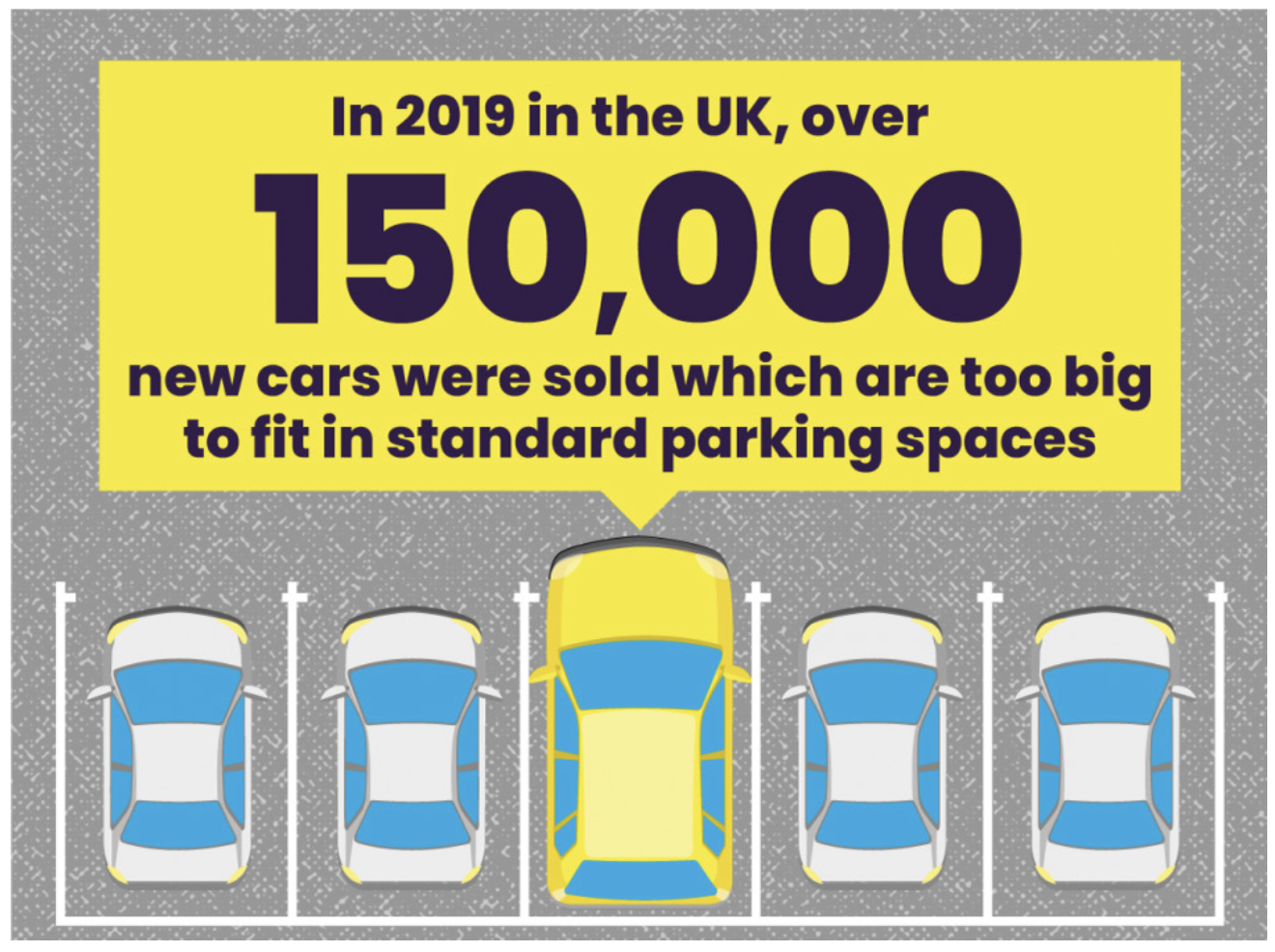TAPAS.network | 17 July 2023 | Commentary | John Dales
The Urban SUVs: Too big for their boots, dangerous to others – and not paying their fair share either

A growing number of cars in urban areas are simply not right for the places they move around and park in, says . Whether it is space-take, road danger, emissions or congestion, large cars like SUVs are even more of a problem than conventionally-sized cars, and they are not paying appropriate charges for the trouble they cause. It’s something on which action is needed, and which some authorities are, encouragingly, starting to tackle.
SAFE AND HEALTHY STREETS campaigners and advocates of more liveable neighbourhoods often make a point of taking issue with the way we talk about vehicle crashes or collisions. News reporting and even official documents often feature phrases like “A car collided with the side of a house” or “Cyclist hit by truck”, where the impression is given (however unwittingly) that no responsible human was involved as driver, and that the offending vehicle somehow did something all of its own accord.
I am generally sympathetic with this line of thinking, since failure to mention the role of the driver tends to diminish the likely importance of human agency in the incident, in the same way as calling crashes ‘accidents’ does. That’s not to say, however, that the nature of the vehicle is not important too. Indeed, a tragic case last week – which you have almost certainly read or heard about – has rightly put a focus on the particular type of vehicle, as much as the driver.
As you may well have guessed, I’m referring to the awful incident that took place at a school on the edge of Wimbledon Common in South London. In circumstances yet to be fully explained, but reported as involving the driver having had a seizure, a car was driven off the carriageway, up a kerb, through some ‘guard’ railing, over the footway, through a metal gatepost and attached wooden fence, onto a small grassed area within the grounds of the school. In so doing it ploughed into a party of young children and others seated on the ground or at a table, finally coming to a stop against the school building.

How the fatal accident in Wimbledon was reported in the Evening Standard. And a recent advertisement for the type of vehicle involved by Land Rover
From what can be seen in pictures of the damage to the car and building, it would seem as though the car was travelling quite slowly when it hit the school wall, and the aerial photography and videos published widely don’t show any skid marks along the roughly 25m-long path that the car took across the grass. In short, the indications are that the car wasn’t travelling especially fast as it made its way towards those enjoying their end of term party. Yet, it nevertheless killed two 8-year-old girls and injured 14 other people, one of whom – a woman in her 40s – remains in a critical condition as I write this.


The school pictured before the impact from the vehicle showing the barriers it must have broken through to reach its resting place in front of the school building (right)
While much is currently unknown about this dreadful event, it is known that the car involved was a Land Rover Defender 110, weighing between 2.25 and 2.45 metric tonnes. It’s a type of vehicle classified as an SUV (Sports Utility Vehicle) and spoken of more casually as an Urban 4x4 or, back in the day, a ‘Chelsea Tractor’. This latter epithet carried with it the notion that the vehicle – which might well have the capability to perform well across fields and elsewhere off-road – is essentially out of place in cities. The Wimbledon incident is by no means the first to provide evidence that this may be the case, which should surely give us cause to reflect on the acceptability of such large vehicles on streets and in other places where lots of people are to be found.
As far back as 2004, in Volume 36 of the Journal of Accident Analysis & Prevention, authors Lefler and Gabler published research which showed that pedestrians were at far greater risk of being killed in a collision with a large SUV than in a collision with a conventional car. This was to do with both size and shape. And if you Google “danger posed by SUVs” you will now find a wide range of other research and reports all concluding more or less the same thing: that while the increasingly popular large SUVs may be great for the safety of those within, it’s bad news for those outside, especially people walking and cycling. Indeed, due to their higher centre of gravity, and therefore greater propensity to roll over, they may not even be as safe for occupants as they’d like to think.
Big cars aren’t just a greater source of road danger for others than small ones, however. They also perform proportionately less well in relation to almost every other indicator relating to their externalised impacts:
-
they take up more space when parked;
-
they take up more space in a traffic queue;
-
they’re harder for other road users to filter past, such as on a cycle;
-
they emit more carbon;
-
they do more damage to the highway; and
-
they produce more pollution.
One might reasonably conclude that, in broad terms, the bigger the car the bigger the finger its owner is giving to everyone else.
That may not sound entirely fair, and it may not actually be so for all SUV owners; but it does point to the truth that the ownership and use of SUVs and other large cars generally confers benefits – safety, capacity, prestige – that are gained at the expense of significant disbenefit and possible harm to all other road users, and society more generally.
These disbenefits have, however, been largely overlooked when it comes to transport policy, traffic regulation, charging and the like. Accordingly, Islington Council’s decision to apply differential charges for residential parking permits based on vehicle size, including – uniquely in the UK to date – electric vehicles is hopefully a significant step in the right direction. As reported by Deniz Huseyin in LTT871, the London Borough’s seven-band scale of charges for a 12-month EV permit now ranges from £50 for the smallest battery size to £140 for the largest. Islington has also had a seven-band scale of charges for cars with petrol and diesel engines for some years, with the current range of annual charges being £100-£700 for petrol engines and £260-£860 for diesel engines. Differential charges by engine size/emissions are relatively common (e.g. Croydon, Ealing, Edinburgh), though not ubiquitous.
The Council’s move to charge for EV parking permits, and to do so differentially, is explicitly in pursuit of its wider policy to encourage lower private car ownership and higher levels of active travel. As Islington’s Director of Environment and Commercial Services was quoted as saying, “This is one of many schemes we have introduced to achieve our ambitions to become a net zero carbon borough and create a cleaner and safer environment for our residents”. In relation to the specific issue of banded EV parking permits, the Council’s Assistant Director of Parking Services noted that, “There are now very large electric SUVs and sports cars, where there is significant carbon footprint from the production and recycling of the battery.”
The different rates of pedestrian deaths from impacts by vehicle type

Islington’s new tariff for electric vehicle parking permits

Rowena Champion, Executive Member for Environment, Air Quality, and Transport, added that, “There’s more that we all can and must do to tackle the air quality and climate emergency, especially following the World Health Organisation’s decision to set tougher global air pollution targets. That’s why we’ve made significant changes to our current parking system, which encourage the switch to sustainable transport. The changes that we’ve made ensure that parking charges more accurately reflect the pollution cars create. While electric vehicles mostly have less environmental impact than petrol and diesel vehicles, they nevertheless cause pollution through the release of particulates from the brakes and tyres, which can be breathed in and cause harm. They also contribute to congestion and take up road space, making roads less safe for people who are walking or cycling.”
Summarising a truth that seems to be an inconvenient one for Government ministers, while EVs aren’t as bad as conventional vehicles in respect of tailpipe emissions, they’re just as bad in almost all other respects, pound for pound, as cars with internal combustion engines (ICE). Given that electric cars are generally heavier and capable of accelerating more quickly than their ICE equivalents, it’s arguable that they are correspondingly more dangerous to other road users. I’ve not seen a detailed calculation of the overall cost benefit, but might all these elements add up to represent something along the lines of a nil gain when it comes to their overall capacity for harm?
Islington isn’t the only public authority to have recognised the need to address the increasing impact of cars that have grown and grown in size and other unwelcome characteristics for use in urban areas – however they may be powered. As recently reported by Kim Willsher in The Guardian, from 1st January next year, the city of Paris is to impose higher parking fees on owners of SUVs in its battle to reduce pollution in the French capital, with vehicle size, weight and its motor taken into consideration. Councillors approved the measure unanimously, with one of the idea’s proposers stating that, “We would like the city of Paris to change the pricing of paid parking to make it progressive according to the weight and size of vehicles.” He added that the aim was “to focus on an absurdity: auto-besity … the inexorable growth in the weight and size of vehicles circulating in our cities”.
Paris officials report that the number of SUVs in the city has increased by 60% over the last four years and that they now make up 15% of the 1.15m private vehicles parked in Paris every evening. A Deputy Mayor with responsibility for public space and mobility policy, said SUVs were incongruous in an urban environment: “There are no dirt paths, no mountain roads … SUVs are absolutely useless in Paris. Worse, they are dangerous, cumbersome and use too many resources to manufacture.”
The story also reported that Lyon and Grenoble are planning to take the same path as Paris.
What these Councils are doing is challenging our societal acquiescence in a ‘car culture’ that accepts the dominating presence of cars in cities as almost a force of nature: so commonplace we just don’t see it anymore. It is worth observing that, while the notion of Placemaking has gained increasing traction in recent years, and has embraced new thinking about the desirability and suitability of a wide range of features in the urban realm over recent years, from street furniture to trees, I’m not aware that the effect of the size and shape of vehicles on the quality of residential, retail or social environments has received much direct attention.

Out of scale: how the largest personal vehicles now dominate the kerbside both in length, width, height and general visual mass in a residential context
The rapid growth in the number of large SUVs on our streets is something that is a particular focus of the organisation adfreecities.org.uk. In a blog dated August 2020, it referred to a then recent report by the New Weather Institute and climate charity Possible, Badvertising – stop adverts fuelling the climate emergency, which revealed that, in 2019 alone, over 150,000 new cars were sold in the UK which are too big to fit in a standard parking space.
Adfreecities sees the way that manufacturers are marketing large cars as being a fundamental factor in the growth of their ownership and use. “The tantalising wild landscapes so common in adverts for these giant cars seem all the more deceitful when you look at the reality: that globally rising sales of SUVs are the second biggest cause of increasing CO2 emissions”, says the campaign. “Climate change and extraction are already devastating many of our natural landscapes. But that truth won’t sell many cars. And while these huge cars market themselves as being a safe choice for your family, they ignore the reality for everyone else, which is a more dangerous road for everyone who isn’t inside the car. The millions spent on SUV advertising mask the terrible truth that air pollution kills thousands of people in the UK every year.”
According to data recently published on Twitter by Adfreecities’ James Ward, SUVs accounted for less than 10% of new car sales in the years prior to 2010. But, in 2022, SUVs took six of the top ten spots on the UK bestseller list, and they take seven of those spots in the 2023 list to date. He tracks the rise in ownership to increased spend on advertising by manufacturers and observes that, in 2016, global greenhouse gas emissions from road transport started to rise again, having fallen in previous years. The correlation with the shift from smaller to larger cars is notable.
It’s not just the amount of SUV advertising that has changed, it’s also the style. That 2020 blog spoke of deceptive images of SUVs being driven off-road (even though hardly any of them ever would be), but Adfreecities has noticed a switch in the past decade to the direct advertising of large SUVs as entirely suitable for urban lifestyles, including the school run and trips to the supermarket.
One dimension of the recent Wimbledon tragedy is that the driver of the Land Rover involved might well have been a parent of one of the children at the school in question. However that might be, it is almost certain that a good number of the children at that school are typically driven there in vehicles that are bigger and more powerful than anyone really needs for life in London. But, as comedian Al Murray once observed, in his guise as The Pub Landlord, “Parents drive their kids to school to stop them getting knocked down by other parents driving their kids to school”. (For the record, he also added, “So, we’ll have a generation of flat-footed, asthmatic kids, with no sense of direction!”)
The increasing size of cars is something that my fellow columnist Phil Goodwin commented on last year in TAPAS, 8 August 2022), and which I then picked up on in TAPAS, 5 September, 2022. In that piece, I concluded that, “Almost all the objections that individual vehicle users raise concerning their use of street space (whether moving or static) – from congestion to cost – exemplify the concept known as ‘the tragedy of the commons’ (whereby individuals acting in what seems to be their own best interests ultimately make things worse for everyone). In the context of that article, I was calling on public authorities to assign and assert a proper market value to the public highway, and enable others – from local residents to businesses – to understand how they can all benefit from its better stewardship.
I thought then, and still do, that the Government and local authorities have a real opportunity to transform the economics, the politics and the equity of street space allocation for the common good. So, it’s heartening to see that this is an opportunity that Islington and Paris are grasping, and which other UK Councils – like Lambeth with its Kerbside Strategy (see my piece in TAPAS, 6 February 2023) and Southwark with its recently-published Streets for People Strategy, reported in LTT magazine, LTT873, 17 July 2023 – are also getting to grips with.
Nevertheless, the sad fact is that our UK Government is saying nothing at all that might be construed, in any way, as seeming to put downward pressure on car ownership and use, let alone pointing out the particular unsuitability of certain types of vehicles in urban areas. It is not just me who is unhappy with that. The Government’s own advisors, The Climate Change Committee, has just said so, in its damning 2023 Progress Report to Parliament. This says that targets are being missed on nearly every front, with transport an area of particular concern. As reported in LTT magazine LTT872, 3 July 2023, the CCC’s Progress Report can be summarised as saying, “There is little progress on transport emissions, no coherent programme for behaviour change, and the roads programme is being pushed forward without proper account of the carbon implications.” The Government has thus “made a political choice” to allow an increase in road traffic, instead of encouraging behaviour change.”
As an input to the Progress Report, the Climate Change Committee commissioned consultants WSP to undertake research on Understanding the Requirements and Barriers for Modal Shift. Two of the six recommendations from this research seem rather relevant to my proposition in this article, and are as follows:
One of the main issues with implementing behaviour change campaigns to encourage modal shift is the low cost of parking. We need to consider how to pay for parking in such a way that the externalities of driving are covered by the costs of parking. At the same time, we can use the freed up space to improve the cities and spaces that we live in allowing more commercial and leisure opportunities.
by creating targeted campaigns, specifically aimed at the perception that car use is cheaper than alternative travel modes. Car owners have the perception that car use is less expensive than alternative transport modes as they only really think about fuel costs. Information campaigns that highlight the real cost of a car trip (including elements such as purchase cost, maintenance, MOT, parking) combined with targeted, cheap/discounted public transport use could be a powerful tool to rebalance the travel cost narrative and change people’s behaviour.

The Badvertising campaign have pointed out that cars are being marketed despite their excessive size and impact. https://www.newweather.org/2020/08/03/badvertising-stop-adverts-fuelling-the-climate-emergency/
One would like to think that the Government would take these messages to heart within its transport policy (if there actually is one…) and – urgently – get on the front foot as regards public messaging of the need for change regarding our car owning and driving habits. It could – should – take a public health view about the harms created by cars, especially those of the increasingly large variety, just as with the edicts about drinking, smoking and obesity, and seek to restrict the related advertising accordingly.
I will not be holding my breath, however, especially in the light of the Government’s decision to (literally) plough ahead with the A303 Stonehenge tunnel project. This unhappy scheme will ultimately cost far more than it’s stated £1.7bn price, and that doesn’t count the many externalised costs associated with this Government’s ‘Carry On Driving’ policy.
Without clear, national messaging about the harms of driving, especially in large cars ill-suited to urban streets, we’re in danger of being upset for a few days about the ‘accident’ at the Wimbledon school, and then giving it no further thought once the news cycle moves on. As for any wider discussion about the role of unnecessarily large cars in urban areas, I’ll leave you with the discomforting thought that Jaguar Land Rover is the official partner of the Wimbledon Tennis Championships (has been since 2015 and will be till 2026). Announcing the new deal in 2021, Jaguar wrote that “179 Jaguar and Land Rover vehicles will be used for event operations with Jaguar I-PACE, the world’s first premium all electric performance SUV, at the forefront”.
You may be glad to know that the Championships did tweet their condolences “to all those affected by the tragic events at Wimbledon Study Primary School”. But I’m pretty sure that the incident won’t have made the organisation reconsider its partnership with a brand who recently advertised a Land Rover Defender under the headline “Locked and Loaded”.
You might almost think they were talking about a deadly weapon…
References and Links
-
Volume 36 of the Journal of Accident Analysis & Prevention, authors Lefler and Gabler 2004
-
Paris to charge SUV drivers higher parking fees to tackle ‘auto-besity’, Kim Willsher, The Guardian.
-
Several Previous Dales and Goodwin LTT articles and news items referred to:
John Dales is a streets design adviser to local authorities around the UK, a member of several design review panels, and one of the London Mayor’s Design Advocates. He’s a past chair of the Transport Planning Society, a former trustee of Living Streets, and a committee member of the Parliamentary Advisory Council for Transport Safety. He is director of transport planning and street design consultancy Urban Movement.
This article was first published in LTT magazine, LTT873, 17 July 2023.
You are currently viewing this page as TAPAS Taster user.
To read and make comments on this article you need to register for free as TAPAS Select user and log in.

Log in